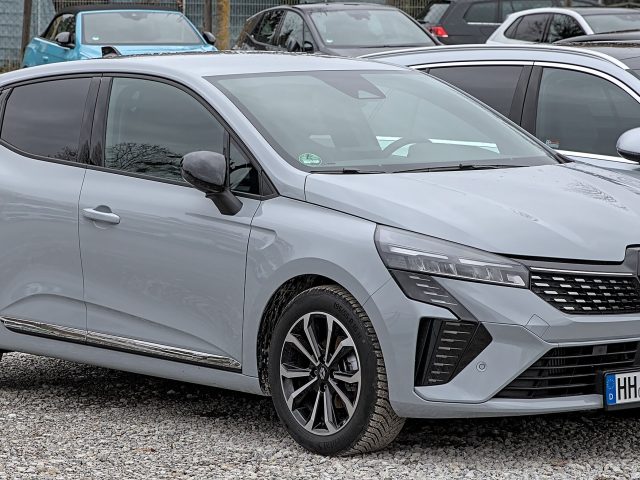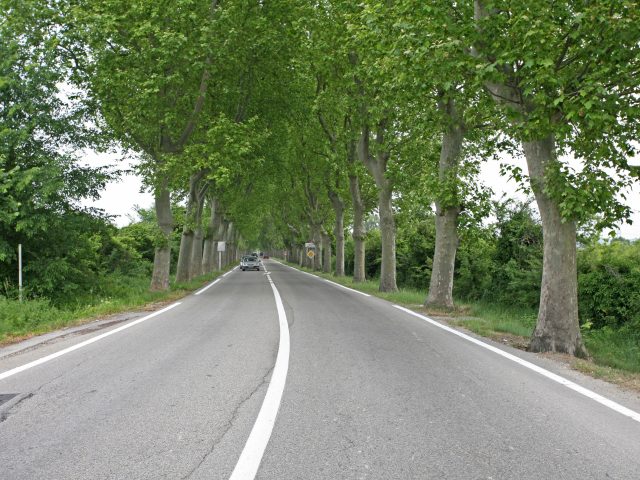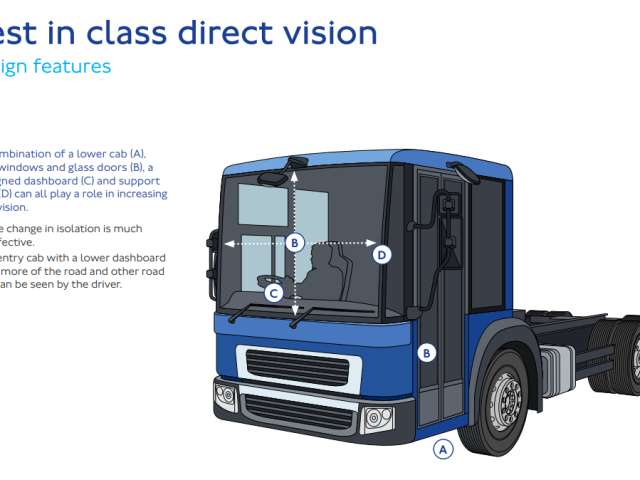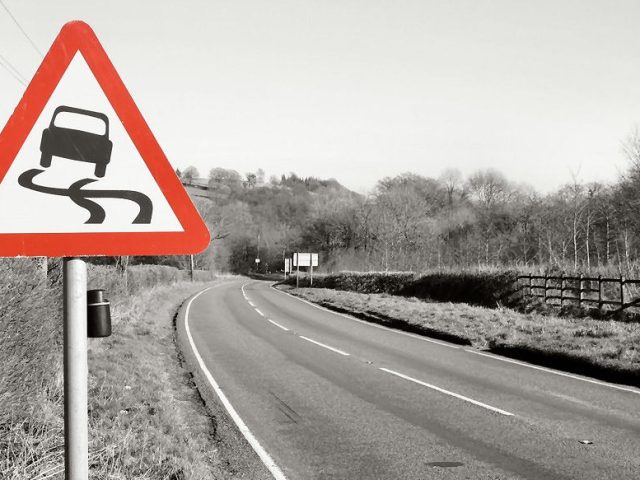Response to the Industrial Action Plan for the European Automotive Sector
On 5 March 2025, the European Commission published the industrial action plan for the European automotive sector. The action plan sets out measures to support the automotive sector in response to the significant structural shifts the industry faces due to technological changes, competitive forces, and a turbulent geopolitical context. This follows up on the strategic dialogue the European Commission held with stakeholders as well as the public consultation.
In this briefing, ETSC responds to the action plan and comments on the measures relevant to road safety set out in it.
Vehicle Safety: A Missed Opportunity
ETSC regrets that the action plan does not highlight vehicle safety as a source of competitiveness and innovation.
Moreover, safety is only mentioned once in the action plan, in the context of the approval of automated vehicles (see below). At least 85% of the 20,594 persons killed on EU roads in 2022 were due to collisions involving passenger cars, vans, trucks and/or buses. In order to achieve the EU’s goal to reduce road deaths to zero by 2050 and given the stagnation in the reduction of road deaths, more should be done to improve road safety, including through increasing the safety of motor vehicles.
As the impact assessment for the revised General Safety Regulation for motor vehicles states in greater detail, the relative international competitiveness of EU based production can be aided by the first mover advantage of EU automotive suppliers in the vehicle safety equipment market, by the knock-on effect of increased safety reputation of EU vehicle brands, by allowing for economies of scale of vehicle safety equipment producers leading to lower unit cost, and by the ability to set world standards by means of introduction of new EU vehicle safety legislation and its global harmonisation potential (e.g. through UNECE cooperation with non-EU contracting parties). Clear examples of this last point are the ongoing processes at UNECE, initiated by Australia, to establish UN Regulations on the emergency lane keeping system, the driver drowsiness and attention warning system, and the advanced driver distraction warning system, which all take the EU requirements as their basis.
Improving vehicle safety by updating the EU’s General Safety Regulation for motor vehicles – which is scheduled for review in 2027 – therefore not only presents an opportunity to improve road safety, but also presents opportunities for the automotive industry’s competitiveness and innovation.
Just as the automotive industry is being challenged, so is Europe’s approach to tackling road safety in trouble. There were 20,400 road deaths in the EU in 2023 – down just 1% on the previous year. Preliminary figures for 2024 show a 3% reduction compared to the year before, and while this is a 13% reduction since 2019 – the baseline for the 2030 target of halving road deaths in the EU – the downward trend has flat-lined in several Member States and risen in others. The EU’s target to halve road deaths by 2030 is now at serious risk.
At European level, there is an urgent need for strong leadership and action to get things back on track. Vehicle safety – where the EU has the exclusive competence – is an important pillar of the Safe System approach to improve road safety and additional actions are desperately needed. This should be in addition to further efforts to make road users and road infrastructure safer, as well as enhancing enforcement and post-crash response. (More information on the road safety priorities for the EU’s 2024-2029 mandate is available here.)
Mutual Recognition of US Vehicles Would Be a Catastrophic Mistake
In the context of enhancing market access and sourcing opportunities worldwide, the European Commission states that, among others, Mutual Recognition Agreements would be used to better support the sector. Mutual recognition of US vehicle safety and environmental standards have been raised as a possibility in trade negotiations with the United States.
Granting mutual recognition would be a catastrophic mistake, and the consequences would be measured in the deaths of men, women and children on EU roads. It would also severely undermine the EU’s single market and world-leading automotive safety standards, and lead to unfair competition in the vehicle market.
EU and US vehicle standards are not equivalent. During negotiations for the Transatlantic Trade and Investment Partnership a decade ago, a study commissioned by the car industry found that EU models were, on average, 33% safer in terms of risk of a serious injury in common front-side crashes. Moreover, the US has no mandatory safety standards for pedestrian protection on new vehicles.
In the years since TTIP, EU and US safety standards have diverged further. Since last year, all vehicles sold on the EU market have required mandatory fitting of multiple safety technologies such as automated emergency braking and emergency lane-keeping systems. These new standards are predicted to prevent thousands of deaths over the coming years. The vast majority of them are currently not mandatory in the US.
Since 2013, road deaths in the EU have decreased by 16%. In the US they have increased by 25%. The figures for pedestrians and cyclists in the US are considerably worse with a 48% increase in pedestrian deaths between 2014 and 2024, and a 53% increase in cyclist deaths between 2013 and 2023.
The US approach on vehicle automation is also not compatible with EU standards. Unproven partial automation technologies have been permitted on vehicles on US roads and linked to numerous fatal collisions. The EU, meanwhile, follows standards and test requirements agreed at EU level and at the UNECE.
Both EU and foreign vehicle manufacturers currently compete on a level playing field with respect to product safety, sustainability and environmental requirements. Granting an unsupported and blatantly incorrect label of ‘equivalence’ to vehicles falling below EU standards would severely bias competition in favour of non-EU manufacturers and negatively impact the EU goals to reduce road deaths and transition to cleaner vehicles.
ETSC, as part of a coalition of prominent European organisations, has sent an open letter to Ursula von der Leyen, President of the European Commission, urging her to reject potential mutual recognition of US vehicle safety and environmental standards in any upcoming trade negotiations with the United States.
The exception to the previously mentioned level playing field concerns the US vehicles imported inappropriately through a loophole in the Individual Vehicle Approval (IVA) process. ETSC welcomes the European Commission’s commitment, reiterated in the action plan, to address this gap in the regulatory framework.
The Single Market for Autonomous Driving Needs an EU Road Safety Agency
The European Commission reiterates in the action plan that it will further develop the regulatory framework for automated/autonomous vehicles, gradually moving from allowing the approval of small series, as is currently the case, to unlimited series. The rules for automated parking systems are expected this year, with more use cases, such as hub-to-hub freight transport, following next year.
ETSC recognises the potential of automated driving to improve road safety, but cautions that the potential will only materialise if a robust regulatory framework is in place that ensures both the safety of the automated vehicles prior to their deployment on European roads as well as an appropriate mechanism to learn from when things go wrong.
Although the regulations for automated driving systems contain provisions on in-service monitoring and reporting requiring the manufacturer to notify type-approval authorities, market surveillance authorities as well as the Commission of safety-related occurrences, the European Union lacks an entity that is fully equipped and resourced for this task of learning lessons.
While the other main transport modes in Europe (aviation, maritime and rail) have dedicated EU agencies responsible for safety, there is no such agency for road transport. ETSC has been calling for several years for an EU agency that would coordinate and/or independently conduct investigations of crashes involving automated vehicles. The agency should furthermore be tasked with overseeing the safe rollout of automated driving technologies through the previously mentioned in-service reporting requirements as well as through independent market surveillance activities. The lessons learned should in turn be published publicly in order to help prevent future collisions, including through updating safety requirements.
The necessity of having an EU Road Safety Agency for such tasks is painfully clear from the deployment of assisted driving systems (Level 2; partial automation), where the system takes over tasks such as controlling the vehicle’s speed and steering, while the driver remains responsible. In Europe we know very little about the safety performance of those assisted driving systems currently on roads across the continent. This is in contrast to the US, where mandated reporting to NHTSA and independent investigations by NTSB give a better insight into such systems’ safety performance and have allowed for follow-up actions to be taken accordingly.
The action plan only explicitly mentions assisted driving systems (as advanced driver assistance systems; ADAS) in the context of harmonising the admission approval procedure for pre-deployment testing. ETSC recognises the value of pre-deployment testing, however cautions that – especially in the context of new assisted driving features – it should remain limited to testing with professional safety drivers, and not be expanded to allow any driver to become a ‘beta-tester’.
In contrast to the previously published Concept Note, the action plan does not explicitly mention the safety regulation for assisted driving systems nor ADAS. The use of assisted driving systems and features for which no safety-improving evidence is available should remain restricted, especially as they have shown to lead to drivers confusing them with automated driving systems and as drivers have shown to over-rely on them.
The previously mentioned EU Road Safety Agency should also be tasked with monitoring the safety of such assisted driving systems, and be granted the power to investigate crashes involving vehicles with such systems independently.
For more information: Frank Mütze, frank.mutze@etsc.eu







